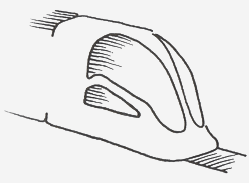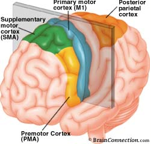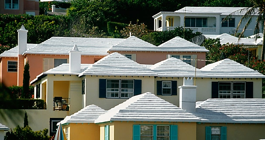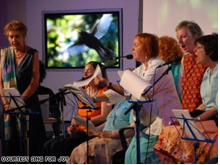|
|
| |
Environmental Scanning through a collection of:
SIGNS OF THE TIMES, TRENDS AND TREND BABIES
1999-2009
|
| |
What is a Sign of the
Times? Signs of the times are the result
of information gathering that looks for inventions,
innovations, attitudes and actions. Signs of the times
come from many sources, are systematically gathered
and have meaning for the future.
What is a Trend?
A trend is long-range and persistent; it effects many
societal groups, grows slowly and is profound. In
contrast, a fad is short-term, "in", effects particular
societal groups, spreads quickly and is superficial.
What is a Mega-trend?
A mega-trend extends over many generations, and in
cases of weather, mega-trends can cover periods prior
to human existence. They describe complex interactions
with many factors and they often represent the introduction
of several new paradigms or worldviews that arise
in hunting and gathering, agriculture, and industrial
societies.
Trend babies:
Here you find general trends or signs of new trends
("trend babies") from the categories social, technical,
ecological, economic or political. Trend babies grow
from innovations in the above categories that have
the potential of going mainstream in the future (for
example: just a few years ago, alternative medicine
was truly alternative. Now it is big business and
very respectable). The choice of trends is naturally
influenced by the author's values.
Trend families:
Very often, the chosen Signs are members of a trend
family. A parent trend (for example, the change from
an industrial society to a knowledge-based society)
is well documented. The ways in which such sweeping
trends play themselves out in various parts of the
community represent the "members of that trends family".
Examples: Jobs in the industrial
sector have shrunk causing widespread unemployment.
|
|
Many countries see small business
as a solution to unemployment, driving unprecedented
attention to small business in many countries legislatures.
Another example of a trend
related to the move from industrial to knowledge society
is the privatization of the education industry.
As in all cases in Signs, sustainability
is one of the larger branches from which many other
twig-sized trends grow. Sustainability is "the property
of being sustainable", "using a resource so that the
resource is not depleted or permanently damaged".
In Signs, I use it to mean sustainable development,
"an approach to economic planning that attempts to
foster economic growth while preserving the quality
of the environment for future generations."
Confirming Trends:
When does a "trend baby", gain acceptance as a bona
fide trend? When it gets enough confirmation in the
various media to show it is an increasingly accepted
value, behavior or technology.
Geographical trend
growth and "bellwether" geographic sites:
There is also an attempt to follow the global spread
of trends that have started in the West (for example,
Women's rights are a generally accepted topic in the
media and on the Internet. Just how and when women's
rights develop in various countries can represent
global growth of that trend.) Some places seem to
lead development in one or a variety of areas and
are looked to as the source of new trends. California
has long been considered as bellwether for the United
States. The Nordic countries of Finland, Sweden, Norway
and Denmark have been considered bellwether in social
innovation.
All trends, to a greater or
lesser degree affect our lives, our work and our futures.
Our ability to understand that effect can many times
make a positive difference in the quality of our lives.
|
| |
Trend
Changing punitive paradigms - Prisons
A broken system
The “lock ‘em all up and throw away the key” world view of wrong doers in the United States has prevailed and grown to the extreme in the United States with one in every 99.1 adults is behind bars. In the 1960s, one state had the healthiest, best fed convicts at lower costs to taxpayers than any other state in the country.
| As early as the 1960’s, another approach was tried. It provided: reasonable rules and regulations, time credit against their sentence for “good behavior”, individual cells (greatly reducing homosexual rape and other abuses of prisoners). Prisoners were expected to grow, can and freeze their own vegetables, pork, beef and chickens and grew crops for sale such as cotton, corn, hay and soybeans. Other jobs were in factories producing products purchased by state agencies, hospitals and others. |
|
 |
Behavioral rules required all prisoners to have short haircuts and respond respectfully with “yes sir” and “no sir.” They were expected to keep their cell and living areas clean. Rewards were hot coffee, donuts, free phone calls outside the prison. They could also earn special late TV privileges on weekends. Those rewards were given based on good behavior during a six week period. They could receive good behavior credit on a daily basis.
The results were lower costs per day per prisoner and the lowest recidivisms rate in the U.S.
Source: The City Wire (local news)
Author: Jack Moseley
Date: August 9, 2009, Retrieved August 12, 2009
URL: www.thecitywire.com/index.php?q=node/5511
Other references: Perform a sight search on this site using the word prison and you will get five earlier Signs of the times.
|
|
| |
Trend
Mass transit moves toward increased sustainability
Spårbilar på väg att bli verklighet (Monorail on its way to becoming reality)
”Många Spårbilsprojekt på gång” (Many monorail projects starting) |
|

Illustration: Petter Johansson from Framtidsbygget
(A Tale of the Future) |
Small, quiet, cars that sit on a rail suspended in the air, may be recognized by many from Disneyworld’s Tomorrow Land. The idea got a renaissance during the ´60’s but has not grown until recently. Today the concept is being, among other things, weather tested in Uppsala, Sweden by a Korean firm. The concept is that a passenger presses a button and a car comes after a couple of minutes and takes you where you want to go. Safety has already been approved by Swedish Rail. Three Swedish cities are gearing up for the new system with Södertälje being first. Financing is hoped to come from large corporations and the city.
The barriers to building monorails in Sweden have been; the fear of being first, worries about capacity, method for emptying cars upon arrival, the taking of space and esthetics. These concerns have been met with arguments of: lower cost (100 million crowns/m2 vs. 250 million crowns/m2.), use of current transportation routes, design that fits into the environment, and new capacity research in advance of construction.
Source 1: Miljömagasinet No. 27
Source 2: Miljömagasinet No. 27
Author 1: Viktor Bjerre and Teodor Kjell
Author 2: Sofi Bondeson
Date 1: July 03, 2009
Date 2: July 03, 2009
|
|
| |
Trend
Alternative fuel sources
Gamla kläder kan ge biobränsle (Old clothes can be a source of bio-fuel)
| Most of the material used for clothes is a combination of cotton and synthetics. Two Swedish scientists have come up with an environmentally friendly solution that separates the cotton from the synthetic particles. Biogas and ethanol are the results of the, then reprocessed particles. |
|
 |
This process can also be applied to construction materials where organic materials are separated from synthetic materials. All of which adds to the available energy and solves the problem of growing garbage dumps. Although many consider ethanol an inferior energy next to the renewables, just the ability to separate materials into their original form may prove useful.
Source: DN.se (Dagen’s Nyheter)
Author: TT
Date: August 17, 2009
URL: www.dn.se/nyheter/sverige/gamla-klader-kan-ge-biobransle-1.932673
|
|
| |
Trend
Sustainable business practice
1.Prisas För att Behålla Nallen (Rewarded for keeping beloved telephones)
In this title mobile telephones are equated to the favorite teddy bear a child clutches for security
2. Mobil med grönt hjärta (Mobil telephone with a green heart)
1. An international mobile operator, Orange, a state owned corporation, has set an example for others to follow. When a customer signs up with them or wants to renew their service, they are encouraged to keep their old phone instead of getting a new one for “free”. They even reimburse their customers 70 Euros when they keep their old favorites. At the same time Orange sends 5 Euros to charity when a contract is signed.
Current policy is to offer a new generation telephone, for a powerfully reduced fee or give them for free when a new service contract is signed. The emphasis is earning profit through service, not from the sale of the telephone. This naturally has resulted in a huge addition of “old” telephones to the electronic junk pile (with all of their dangerous chemicals still intact).
2. As for the qualities “green” mobile phone producers are offering: 100% recycled materials, energy saving graphics, partially recycled parts, energy saving chargers, solar charging, use of kinetic energy with aluminum and glass to save energy. Others are: partial elimination of unwanted chemicals, replacement of paper manual to in-phone, recycled plastics, energy efficient display and water based colors.
Telephone service changes and research in charging and battery construction are paying off and placing those companies at the cutting edge. Before it was tragic to lose ones telephone, and now it will be even more devastating to when our “teddy bear “security is threatened. Having your telephone contents saved to a server (cloud computing?) somewhere might be the answer.
Source 1: Camino
Source 2: Dialaphone Blog
Author 1: Ingemar Gustafsson
Author 2: Kathryn
Date 1: August/September 2009 Nr. 12
Date 2: August 20, 2009
URL 2: www.dialaphone.co.uk/blog/?p=1157
Additional resource: www.caminomagasin.se/nyheter/2009/09/02/mobil-med-gront-hjarta
|
|
| |
Trend
New approach to sustaining slums
Caracas: Connecting slums to the rest of the city by urban cable car
| Slum dwellers, especially those built on steep terrain have very few options to leave the area and travel to potential jobs and services. Instead of tearing down the |
|

Photo: Caracas cable cars 6 Apr 2007 By Guillermo Esteves, Flickr, Creative Commons |
slums, Caracas decided to bring transportation and services to the people. Since the terrain is so steep, cable cars are being used. About 40,000 people will be served by this new attempt.
There are five stations on a route 2.1 kilometers long. Where ever there is a station, riders have access to public transportation links in the formal city, health care, day care, supermarkets, and recreation facilities. The anticipated consequences are many.
Source: Sustainable Cities: A site of Best practices for Sustainable cities
Date: Retrieved September 9, 2009
URL: sustainablecities.dk/en/city-projects/cases/
caracas-connecting-slums-to-the-rest-of-the-city-by-urban-cable-car
|
|
| |
Trend
Controlling the commons
Fighting Biopirates In The Public Domain
| The Traditional Knowledge Digital Library with its documentation of 150,000 remedies makes the traditional wisdom of India, public property, prohibiting anyone from taking a patent on any part of it.
In the past, western biotech companies have tried to patent turmeric, basmati rice and the neem tree. This digital library preserves the healing systems of Ayurveda, unani, and Siddah and even yoga poses are being added. It took 200 researchers eight years to transcribe and translate ancient texts. The material is available in English, French, Spanish, German and Japanese. |
|
 |
Source: Utne Reader
Date: September/October 2009
URL: www.tkdl.res.in
|
|
| |
Trend
Local/Global energy solutions
Central American Snake Oil

Since we already have a story on an unusual source of energy from old clothes, it seems appropriate to accompany it with that of another unusual source of green energy. A plant native to Central America, also grown in Kenya, has become a source of fuel. The Jatropha curcas, which grows well in arid circumstances, produces seeds that are full of oil, perfect for making biodiesel. The biodiesel would give people living in the area access to light, fuel for cooking stoves and diesel engines for a multitude of uses.
Politics has bound this energy source in controversy. The trees were intended as a crop for the biofuel market. In Kenya some believe in large-scale plantations which can compete on a local market. This leaves the locals with no room to grow the food they need, the old food-for-fuel controversy. Non-profits are suggesting small, local farms where people could grow their own food and energy.
Adding fuel to the fuel discussion (pun intended), New Zealand Air Lines has been testing biodiesel in its fuel mix. They say: "We remain committed to our ambition of having ten percent of our fuel needs by 2013 met by alternative fuels, but appreciate there are many more steps to be taken by experts in other areas to deliver biofuel as a commercial aviation fuel source."
This quote and the one above come from a pro biofuels source (see below) “Seeds from the Jatropha plant contain lipid oils that are used to produce biofuel; it can be grown in difficult conditions including non-arable areas, meaning that it has minimal impact on global food production.” If this is true, why are the people in Kenya arguing, and adding to the confusion about what is or is not sustainable?
Source: Utne Reader. Low-Carbon Economy.com
Date: September/October 2009
URL: www.lowcarboneconomy.com/community_content/_
low_carbon_news/6005/air_new_zealand_completes_biofuel_test_flight
|
|
|
| |
Trend
Strengthening contact between brain research and pedagogy
A Fresh Look at Brain-Based Education
| Brain-based Education is the latest paradigm change in education theory. It makes the link between the results of brain research and the pedagogic actions taken in the classroom. It is also a multi-disciplinary approach taking from neurology, sociology, physical fitness, psychiatry, nutrition, psychology, and cognitive science. |
|
 |
Some specifics:
- Neuron development can be stimulated by exercise, lowered stress levels (see below), and good nutrition.
- The impact of the social environment on the brain means more attention to reward systems, acceptance, pain, pleasure, coherence, affinity, and stress in the classroom.
- Neuroplasticity, the ability of the brain to rewire and remap itself by means of neuroplasticity, can be influenced by creating student success using skill-building, reading, meditation, the arts, career and technical education, and thinking skills.
- Allostatic stress loads can be lowered using breathing and meditation skills, anti-mobbing programs, hand and foot massage music and individual exercise.
- Exercise has been strongly correlated with increased brain mass, better cognition, mood regulation, and new cell production.
- Special education students with brain disorders can be greatly helped with aggressive behavioral therapies, new drugs, and stem cell implantation can be used to influence, regulate, and repair brain-based disorders.
- The impact of the physical environment has been explored between architects and neuroscientists and is resulting in new school designs.
Source: Phi Delta Kappa International
Author: Eric P. Jensen
Date: August 3, 2009
URL: www.pdkintl.org/kappan/k_v89/k0802jen.htm
|
|
| |
Trend
Continuing development of Info Technologies
Five Tech Trends to Watch in 2009
|
|
 |
Keeping up with the latest IT trends isn’t easy if one isn’t in the business. Typical of everything new that is introduced, many think this is old news, some may just have heard about and still others are implementing it. In this case, I am referring to cloud computing or Web 2.0. The best analogy is that computing utility companies are being established that will offer you an operating system, all the software (yes, no more installation) you need and even a great deal of hardware. You pay a utility type fee based upon your usage. To do anything on your computer, you sign to your “utility” company via internet (which will probably also be invisible). This same system will work for telephones, handhelds and portables.
When I first began to think about this trend, I thought someone else will have all my files-panic (perceived loss of control). The government or extreme hackers might go in and look at my e-mails or which bills I pay and my bank accounts (paranoia). Then I realized that I had been complaining about computers with friends and family for years, saying that all the codes and languages should be invisible. There should be service providers who come and fix my computer whenever I contact them. I guess a lot of computer wizards heard all our complaints as they floated into cyber space and came up with the cloud analogy. One computer should last forever because the utility would update the programs. The number of gigabytes you need for storage would be their problem as would the computing speed. The cost would be a part of your fee. You would only have to know how to sign in. Technology to the rescue?
Source: E-week.com
Author: Nathan Eddy
Date: January 02, 2009
URL: www.eweek.com/c/a/Midmarket/Five-Tech-Trends-to-Watch-in-2009/
Here are some extra resources to help you understand cloud computing.
www.google.se/search?sourceid=navclient&hl=sv&ie=UTF
-8&rlz=1T4DASE_svSE256SE256&q=cloud+computing
www.youtube.com/watch?v=hplXnFUlPmg
www.youtube.com/watch?v=6PNuQHUiV3Q
|
|
| |
Trend
Sustainable economy
The New Economy
Here are a number of suggestions that are not focused on how the broken economy can be fixed, but upon how it can be refocused to eliminate the problems with the current system, life quality and create an economic insurance policy in the face of climate change. New economy suggestions are geographically local. The idea being that local communities must take care of themselves, so if one community fails, other communities are still intact. Larger economic entities like nations, regions and global never fall so far because the local economies are their safety net.
Local control of land and water, a local, democratic banking system, local currencies, local banks and credit unions (a group of individuals who pool their savings and can borrow money at lower rates) are all a part of this New Economy. Co-operative banks and businesses that making local, sustainable investments are included. Allowance is made for pension fund investments in local communities or regions and cooperative jobs that provide services in jobs requiring lower formal education commitments such as laundries, food growing and merchandising, individual solar installation.
These ideas only represent something new in the way they are combined. They do represent time tested, locally oriented ways of providing for people. They are often revitalized old ideas from earlier crisis or new combinations of existing ideas. These ideas are underpinned by valuing and believing in the goodness of people and their collective will in a society where sustainable (on nature’s timetable) development can provide for everyone. The current system is underpinned by prioritizing fulfillment of individual needs in a limited society where competition and “the early bird gets the worm” is the primary will.
Source: Yes! Section: The New Economy
Authors: Judith D. Swartz, Zach Carter, Michael Shuman, Ted Howard, Steve Dubb and Gar Alperovitz
Date: Summer 2009
URL: yesmagazine.org/default.asp
|
|
| |
Trend
Carbon cutting
Whitewashing cities could massively cut carbon emissions
|
|
 |
In areas where air conditioning is necessary, painting roofs, buildings, roads etc a cool color means it would absorb less heat, drastically cutting energy use by 10 to 15%. This information from Nobel prize winner and Head of the U.S. Department of Energy. Cool colors on everything results in less heat absorption and more reflection of the sun’s rays back in the direction of the sun.
It is hard to say if satellite pictures of American desert communities in the future will glisten as the sun shines on their white roofs. It is an indication of the flood of ideas that abound for cutting carbon and energy dependency. Painting or whitewashing is a relatively inexpensive if not temporary solution. The sun is very hard on all materials, not to mention paint. Should one try to grow plants on their roof instead, or have a living-roof? Since this suggestion is a trend baby it is clear that the pro’s and con’s and long-range consequences still have to be determined and evaluated.
Source: Low Carbon.com, U.S. Department of Energy
Author: Low Carbon website
Date: May 28, 2009 Retrieved July 24, 2009
URL: www.lowcarboneconomy.com/community_content
/_low_carbon_news/5966?29052009
|
|
| |
Trend
Political Trends
International peacemaking techniques begin to integrate into political environments
 |
|
Peacemaking skills are seeping into many different areas. Participants of political groups focus on creative alternatives for responding to conflict. Specifically, they are encouraged to seek common ground as a starting point, use mediation techniques and include multi-stakeholder dialogues. |
The use of these techniques is being used by both elected officials and professional policy makers. Much of it is behind the scenes least discussions of the methods outshine the results.
For many years there have been individuals and organizations that have developed tools for helping self-named enemies into a framework of dialogue. These groups are now growing, worldwide, spreading their work. The global database of civil society organizations, wiserearth.org, notes 4,039 organizations focused upon conflict resolution and 9,869 working in peace making and peace building. These figures increase on a regular basis.
Source 1: The Center for Visionary Leadership
Source 2:
Author 1: Corinne McLaughlin
Initiator 2: Paul Hawken
Date 1: 2006 Retrieved August 4, 2009
Date 2: 2005, Retrieved August 4, 2009
URL 1 : www.visionarylead.org/articles/new_pol_trends.htm
URL 2 : www.wiserearth.org/issues#237
Specific Resources:
The Center for Non-Violent Communication,
Search for Common Ground,
Volunteering in Peace Building and Conflict Resolution
|
|
| |
Trend
Use of nature’s laws – managing risk
Säkrare samhälle genom Darwin (Safer Society based upon Darwin)
Scientists have been using the laws of nature to create new products and here we have an example of the utilization of nature’s method for handles risk and therefore increasing survival, a natural handling of evolution as described by Darwin. The examples from nature show that we cannot eliminate risk, only decrease it.
The four natural strategies described by example are:
Adapt to the risks instead of trying to eradicate them.
Create variation in safety responses.
Spread out decision making.
Communicate in a cleaver way with both friends and enemies.
Source: P1 Vetandets Värld
Producer: Jon Torkelsson
Date: Originally produced earlier Retrieved July 24, 2009
URL: www.sr.se/webbradio/webbradio.asp?type=db&
Id=1630070&BroadcastDate=&IsBlock
ATTN:This radio program is in Swedish, but the experts use English and give enough information to get the idea. Most of the Swedish is translation.
|
|
| |
Trend
Increasing sophistication of brain research methods
Music a 'mega-vitamin' for the brain
| There is growing evidence that music has neurological benefit beside the obvious mood lift. Scientists have seen improved motor function, communication and even cognition. In stroke patients, listening to music for several hours a day can enhance rehabilitation as does learning to play the piano and drums. Musical and rhythmic cues are effective for improving movement and balance in suffers of Parkinson's disease and other degenerative diseases. Aphasia or damage to language centers is improved by musical exercises. |
|
 |
The movement from the fringes to valid medical treatment has begun. A center for music research is Colorado State University, Center for Biomedical Research..
Source: CNN
Author: Simon Cooper
Date: June 2 , 2009
URL: edition.cnn. com/2009/HEALTH/06/02/music.therapy/
|
|
|
|